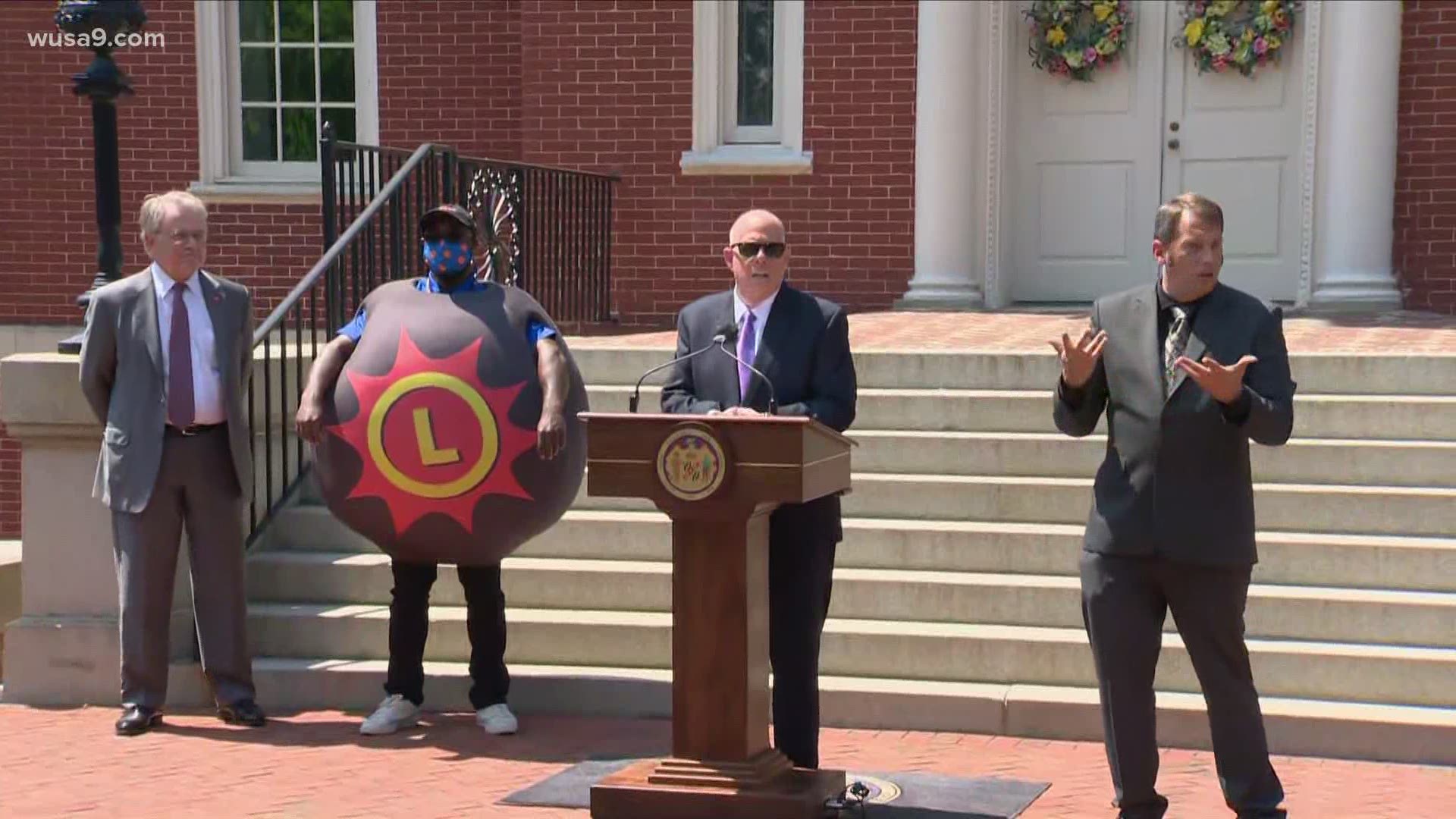ANNAPOLIS, Md. — Maryland Gov. Larry Hogan is taking his "No Arm Left Behind" campaign to the next level by offering financial incentives to get vaccinated. The governor partnered with the Maryland Lottery to give away $2 million in prizes to anyone in the state who has received a COVID-19 vaccine.
Beginning May 25, the Maryland lottery will award $40,000 a day for 40 days to a vaccinated Marylander. On July 4, the state will hold a grand prize drawing of $400,000 to one lucky resident.
In order to qualify, you must:
- Be a Maryland resident
- Be 18 or older
- Get vaccinated for COVID-19 in Maryland
Anyone who has already been vaccinated in Maryland is also eligible. The Maryland Department of Health (MDH) will attach a string of numbers to vaccinated people in the database. Those numbers will then be put in a random number generator by the Maryland Lottery and a new winner will be chosen daily. All winners will be notified by MDH and the funding is being provided by the Maryland Lottery's marketing fund.
"Promotions like this are just one more way we are reinforcing the importance of getting every single Marylander we can vaccinated against COVID-19," Hogan said. "If you needed one more good reason, then go out and get vaccinated for your chance to win a share of this $2 million. So remember Maryland—get your shot for a shot to win.”
RELATED: Ledo Pizza giving away free pizza to people with their first COVID-19 vaccine shot in Maryland
Hogan encouraged other state leaders in the area to adopt similar initiatives. Previously, Hogan teamed up with Maryland pizzeria, Ledo Pizza, to give away free pies to those who had been vaccinated.
According to the governor, more than 87% of Marylanders over 65 and 67% of Marylanders 18 and older have been vaccinated. Hogan said his goal was to have 70% of all adults vaccinated by Memorial Day weekend.
The state's 7-day positivity rate is the lowest it's been during the pandemic at 2.06%, which Hogan said is the 8th lowest in the country. Maryland's case rate is also the lowest it has been since April 4, 2020 at 5.5 per 100,000 people, Hogan said.

